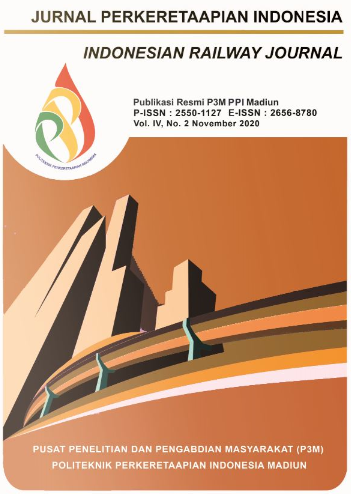OMRON CPM1A PLC BASED CARWASHING MACHINE CONTROL DESIGN
DOI:
https://doi.org/10.37367/jpi.v4i2.130Keywords:
design, control, PLC, carwashingAbstract
In this study, the authors conducted research on the manufacture of relay and PLC-based carriage and carriage washing system control designs. The method used includes planning, literature study with various electronics references related to this tool, analysis of the needs of the components that will be used in manufacturing and testing in its implementation. The purpose of this research is to create a control system for washing trains and carriages based on relay and PLC manually and automatically with the advantages of more efficient washing time, less labor required and more efficient and scalable use of soap and water. The design of a control system using PLC and relay as the brains of this train and carriage washing system and is assisted by the presence of 4 water level sensors to measure water level and the sequence of steps is water spray, soap spray, cloth rotation, water, cloth rotation, wind. from the fan to the final step as the dryer. After testing and simulation, optimal performance results are obtained that the PLC Omron CPM1A 40cdr design can move the control functions of the train and carriage washing system
Downloads
References
Peraturan dinas nomor 8a ,Penggunaan sarana pada lintas pada lebar jalan rel 1067 mm.
Peraturan Menteri Perhubungan Republik Indonesia Nomor PM 17 Tahun2018 Tentang Pedoman Tata Cara Perhitungan Dan Penetapan Tarif Angkutan Orang Dengan Kereta Api.
Syahreza, Saumi. 2010. “Rancang Bangun Pengendali Otomatik Ketinggian Fluida dan Temperatur Menggunakan Programmable Logic Controller (PLC).” Rekayasa Elektrika 9(1): 36–42. https://unsyiah.ac.id.
Julboub, Mohamed K, and Ahmed A Elmghairbi. 2014. “Step Motor Control by Using (PLC) Programmable Logic Controllers.” University Bulletin 2(16): 111–
http://www.bulletin.zu.edu.ly/issue_n16
Yulistyawan, Dedy. 2007. “Mesin Vacuum Metalizer Untuk Proses Coating.” Gematek9 (1):99–118.
http://cpanel.petra.ac.id/ejournal/tek/article/vie w/16922/16908.
Downloads
Published
How to Cite
Issue
Section
License
The Authors submitting a manuscript do so on the understanding that if accepted for publication, the copyright of the article shall be assigned to Jurnal Perkeretaapian Indonesia (Indonesian Railway Journal).





